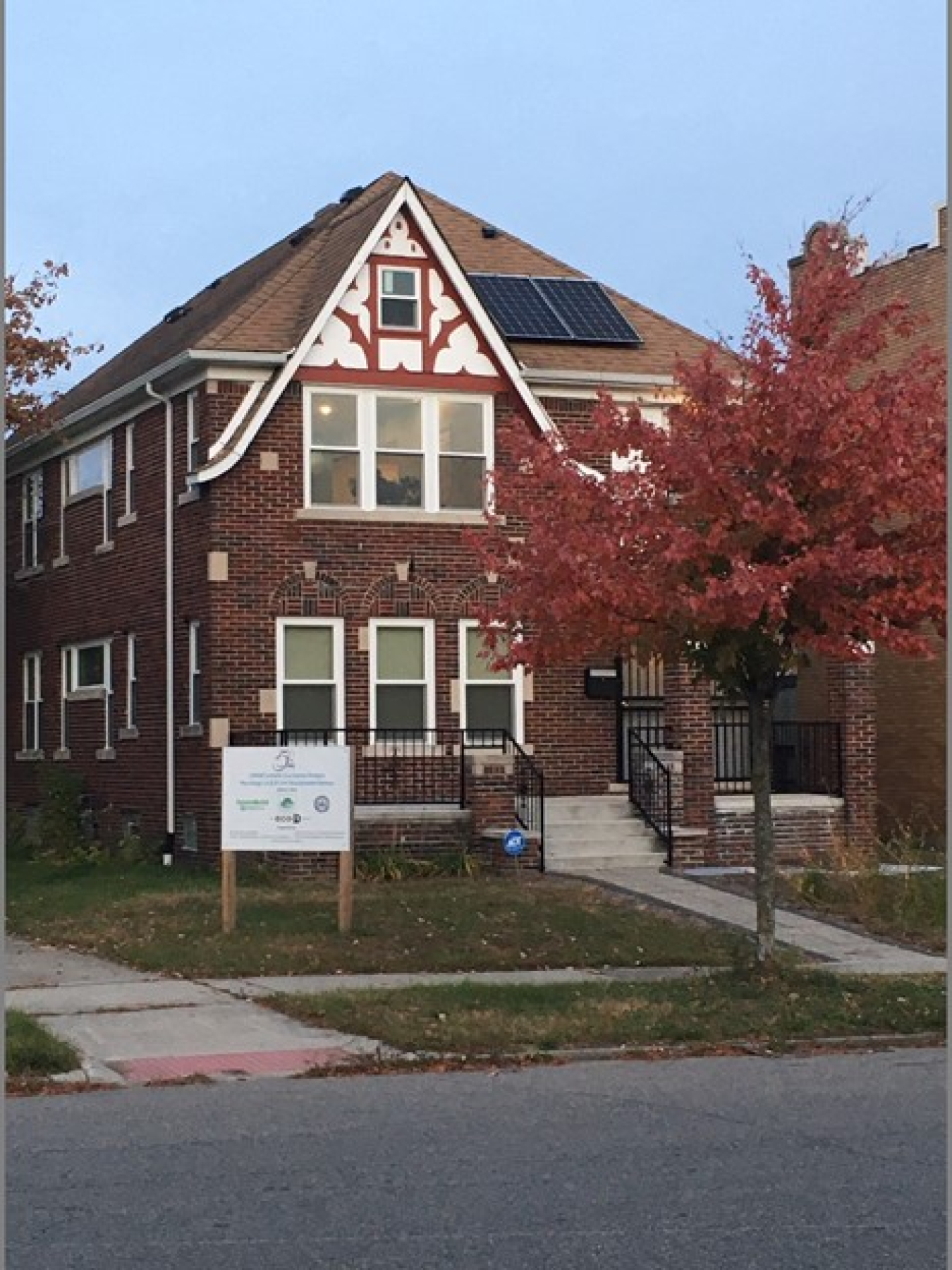Community-owned solar is growing in Hope Village, a 107-block neighborhood in Detroit, thanks to the work of HOPE Village Revitalization, the neighborhood’s community development corporation.
October 1, 2021Community-owned solar is growing in Hope Village, a 107-block neighborhood in Detroit, thanks to the work of HOPE Village Revitalization, the neighborhood’s community development corporation. Despite setbacks, it hopes to develop its first community solar site in 2023 and has set an ambitious goal to install 500 kilowatts of solar energy in the community by 2030. They’re hopeful that their work—and lessons learned—will empower others to follow their lead.

Hope Village is home to an active community committed to building wealth and ownership among its residents, many of whom are renters with limited or fixed incomes. In addition to the challenges of aging homes and rising energy costs, residents experience frequent power outages from severe weather events. These outages pose a significant health and safety risk to residents from extreme temperatures, or when they rely on medical equipment that requires electricity. Residents often incur additional costs to replace food or medical supplies lost from their fridge or freezer during outages.
HOPE Village Revitalization began exploring the benefits of community solar in 2016 when the neighborhood adopted a community strategic vision calling for the community to become an “equitable, sustainable neighborhood with a high quality of life for all.” For Hope Village, community solar not only provides a lower cost energy source for neighborhood residents, it also creates opportunity for neighborhood micro-investment in the development and reduces reliance on an overworked grid. During power outages, solar can also provide some resilience benefits. But developing a community solar project in Michigan did not come without challenges.
In 2018, Hope Village installed a 5.9 kW solar array on the roof of the LaSalle Eco-Demonstration Home. This formerly abandoned two family flat was retrofitted to serve as a demonstration site for energy efficiency and renewable energy and other sustainable techniques and eventually became the HOPE Village Revitalization headquarters. The solar array drew immediate interest from residents, especially when they learned that the panels reduced the office’s spring, summer, and fall electricity bills to just $9 a month. But electricity generated from the demonstration home was not shared by other residents.
In order to build a solar site that would benefit more residents, HOPE Village Revitalization conducted a feasibility study for a solar array on a large swath of vacant land located near the intersection of two freeways. However, they quickly ran up against state legislation that prohibits the transfer of generated energy across property lines by any entity that is not a utility provider. While utility providers can grant an exemption to this restriction for community solar projects within their jurisdiction, this exemption and the use of the existing grid to transfer the electricity was not made available for the project.
In 2018, HOPE Village Revitalization participated in the National Community Solar Partnership (NCSP) competition, Solar in Your Community Challenge. It received technical assistance to explore an alternative community solar model that used grant funding to make an initial investment in solar panels. The panels would be hosted on the roofs of several industrial buildings in the community. Then these host sites would share a portion of the savings from reduced electricity costs with community members participating in the program. Unfortunately, the feasibility analysis found that the energy costs saved by the industrial sites, which already pay a lower electricity rate than residential customers, would not be large enough to provide a community benefit.
Undeterred, HOPE Village Revitalization continued conversations with local nonprofits, legal firms, and community members to create a community solar model that could overcome these barriers. Working with Soulardarity and The Cooperation Group, HOPE Village Revitalization created a model that used a modified community land trust structure to provide long-term ownership of roof rights and solar arrays on low-income apartment buildings in the neighborhood. The arrays would be financed and installed by a limited liability company (LLC), which would be able to access the federal solar tax credit to offset some of the costs of installation. The power would be sold at a fixed price to the apartment building residents—at a price lower than they would otherwise pay—and each set of arrays would be sized so that all of the electricity generated would be used in the apartment building on which the arrays were located, reducing reliance on the grid and making residents more resilient in the event of a power outage. Once the costs of installation had been recouped by the LLC, the financial benefits of ownership of the solar array would flow to the community land trust entity, controlled by residents of the building and the neighborhood, and made available to fund additional solar projects in the neighborhood. These additional projects, which may include battery storage, could amplify the impact of reduced reliance on an overworked grid, improving resilience community-wide.
HOPE Village Revitalization is currently assembling project capital. They have identified several target (currently vacant) apartment buildings and are coupling their solar strategy with a strategy to ensure that the units themselves can be renovated and remain affordable for the long term. They hope to have assembled capital for acquisition in early 2022 and to complete the solar installation in 2023. They believe that the path they are charting toward community-owned solar for their neighborhood can be followed by others in the state and beyond to drive access to renewable energy and its meaningful benefits for all.
In addition, the Michigan Public Service Commission staff recently conducted an extensive review of some of the regulatory and legislative revisions needed to better facilitate non-utility owned community solar.
Across the country, organizations like Hope Village Revitalization face local barriers to community solar. The NCSP is designed to leverage peer networks and free, on-demand technical assistance to overcome persistent barriers to expanding community solar access to underserved communities. As of September 2021, NCSP had over 650 members from over 440 partner organizations. Join today.

